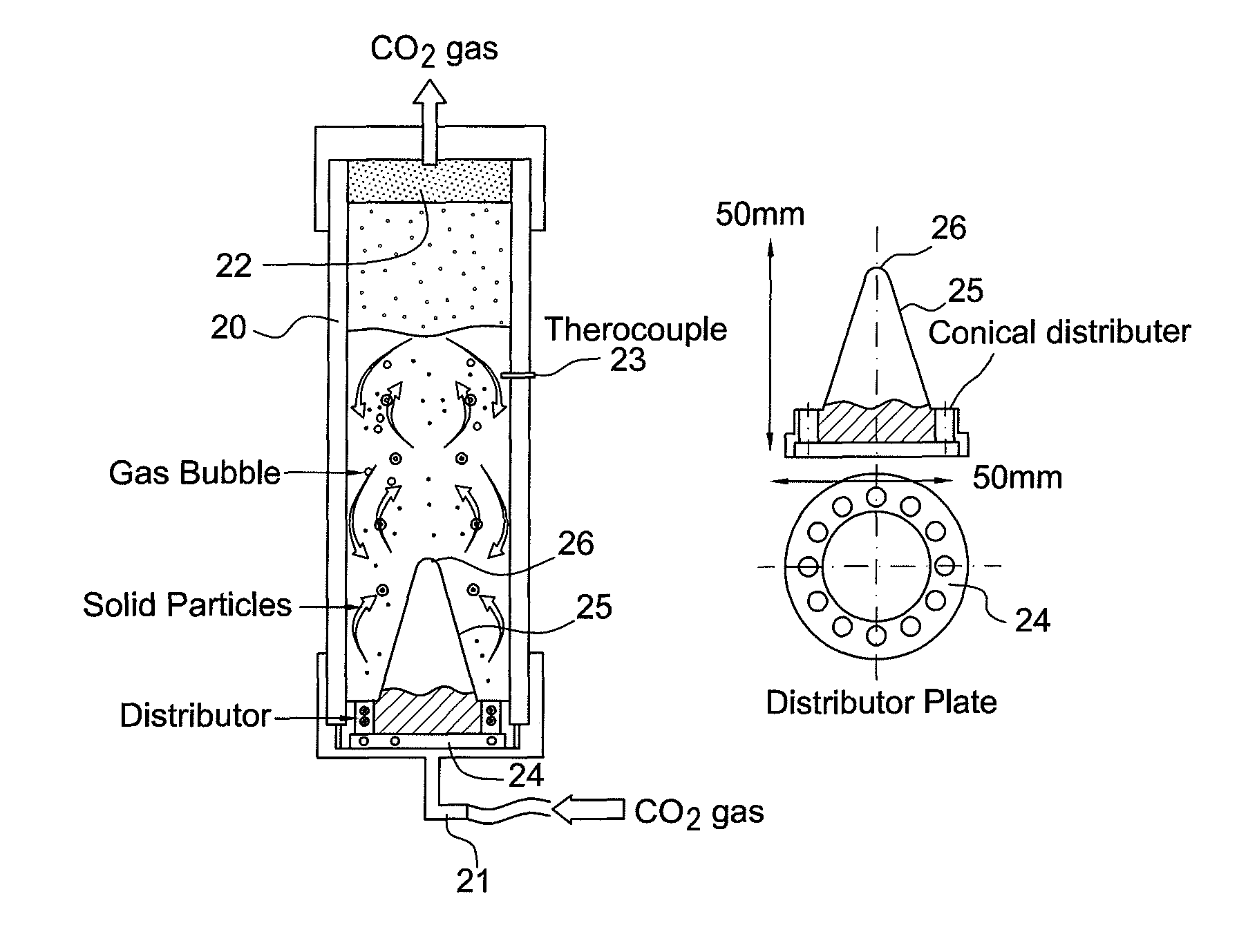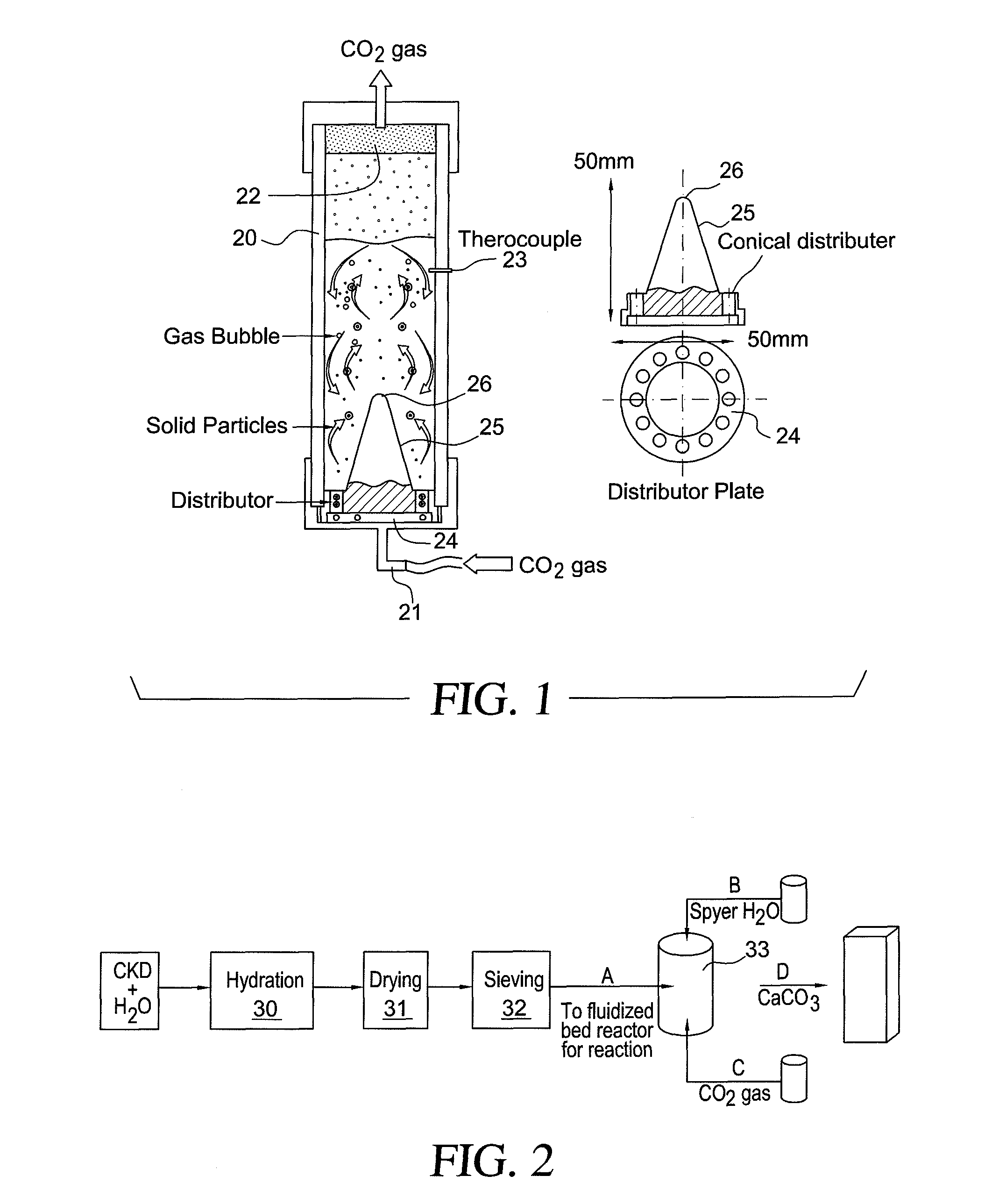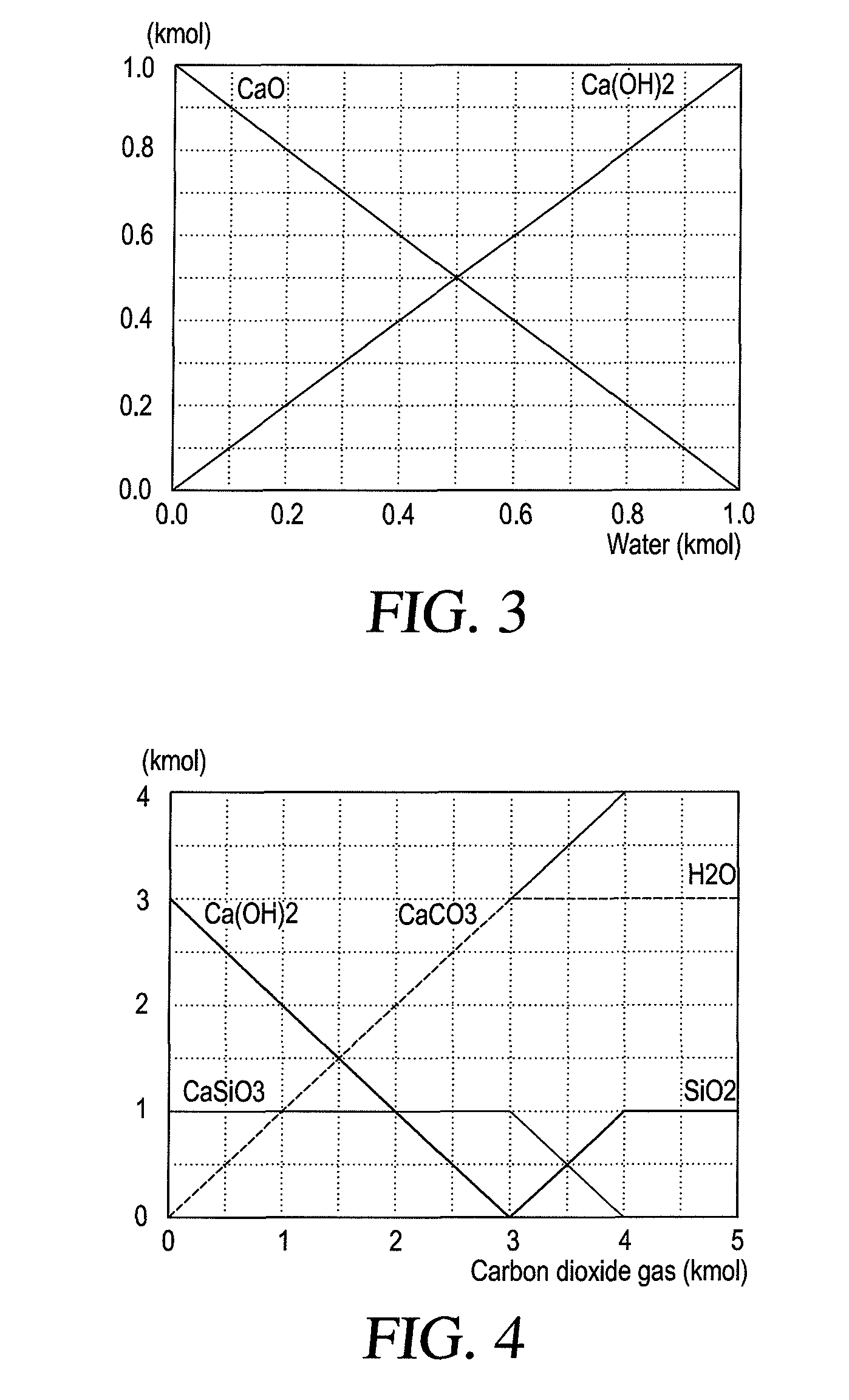Method for treating cement kiln dust
a technology of cement kiln dust and treatment method, which is applied in the direction of sustainable waste treatment, cinker content reduction, and lime production, etc., can solve the problems of large amount of dust generated in cement kiln dust, unsuitable for direct return to cement-producing process, and large amount of dust generated, so as to promote the stabilization of many inorganic constituents and lessen the dissolution of leaching
- Summary
- Abstract
- Description
- Claims
- Application Information
AI Technical Summary
Benefits of technology
Problems solved by technology
Method used
Image
Examples
example 1
Hydration of Cement Kiln Dust
[0080]The cement kiln dust samples were supplied by a cement factory in Al Ain, United Arab Emirates.
Samples were taken from open storage piles in a weathering area. The cement kiln dust consisted of 46% CaO, 12.63% SiO2, 2.26% Al2O3, 2.08% Fe2O3, 0.89% MgO, 1.78% K2O, 0.25% Na2O, 1.56% SO3, and 0.52% Cl.
[0081]When water is added to the cement kiln dust, the following set of reactions take place.[0082]1. Quick lime is hydrated to form hydrated lime [calcium hydroxide, Ca(OH)2] which is not stable in water. The chemical reaction is expressed by equation 1 as:
CaO(s)+H2O(l)→Ca(OH)2(s) ΔH(35° C.)=−65.47 KJ / mol. (1)[0083]2. Ionization of calcium hydroxide; pH rises to 12.3 as demonstrated by equation 2.
Ca(OH)2→Ca2++2(OH)− (2)[0084]3. When a pozzolan (reactive silica) is present in the system, the calcium silicate hydrates [C3S2H3] formed as a result of the reaction between lime and pozzolan that are stable in water. The relevant chemical reactions may be ex...
example 2
Carbonation of Cement Kiln Dust
Carbonation Stages
[0101]In order to determine the feasibility of possible calcium carbonate production, the processes were modeled using HSC-4 chemistry software and the results are shown in FIG. 4. Carbonation of concrete kiln dust is often described as two stage reactions. Based on thermodynamic analysis of the two reactions expressed by equations 8, and 9, it is clear that both reactions are spontaneous and exothermic.
Ca(OH)2(s)+CO2(g)→CaCO3(s)+H2O(l) ΔH(35° C.)=−112.48 k.J / mol (8)
CaSiO3+2CO2+4H2O→Ca2++2HCO3−+SiO32−→CaCO3+SiO2.H2O+H2O+CO2ΔH(35° C.)=−41.84 kJ / mol (9)
[0102]The first reaction [CO2—Ca(OH)2] has more negative Delta G (−112.48 KJ / mol) than the second one [CO2—CaSiO3], where Delta G equals −41.84 KJ / mol. Hence, the first reaction will take place first. The second reaction will not proceed as long as there is some Ca(OH)2 in equilibrium. This can be clearly seen from the results shown in FIG. 4. Because of the exothermic nature of the ca...
example 3
Physical Properties of Untreated and Carbonated Cement Kiln Dust
[0116]The physical and chemical characteristics of the cement kiln dust, which is collected for use outside of the cement production facility, will depend in part on the method of dust collection employed at the facility. Free lime can be found in cement kiln dust, and its concentration is typically highest in the coarser particles captured closest to the kiln. Finer particles tend to exhibit higher concentrations of sulfates and alkalis. If the coarser particles are not separated out and returned to the kiln, the total dust will be higher in free lime.
[0117]The pH of the original cement kiln dust water mixtures is very close to the pH of a solution saturated in Portlandite. It contains significant alkalis, and is considered to be caustic. After carbonation, however, the alkalinity of cement kiln dust is reduced since the calcium oxide is converted into calcium carbonate. As the concentration of OH− decreased, the conce...
PUM
| Property | Measurement | Unit |
|---|---|---|
| water content | aaaaa | aaaaa |
| temperature | aaaaa | aaaaa |
| diameters | aaaaa | aaaaa |
Abstract
Description
Claims
Application Information
 Login to View More
Login to View More - R&D
- Intellectual Property
- Life Sciences
- Materials
- Tech Scout
- Unparalleled Data Quality
- Higher Quality Content
- 60% Fewer Hallucinations
Browse by: Latest US Patents, China's latest patents, Technical Efficacy Thesaurus, Application Domain, Technology Topic, Popular Technical Reports.
© 2025 PatSnap. All rights reserved.Legal|Privacy policy|Modern Slavery Act Transparency Statement|Sitemap|About US| Contact US: help@patsnap.com



